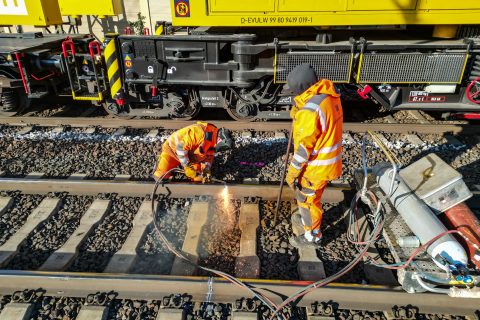Polish-American transport talks focus on Via Carpathia development

A meeting between the Polish infrastructure Minister, Andrzej Adamczyk, and the US Ambassador in Poland, Marek Brzezinski, focused on the development of more transport and logistics solutions on the Eastern European border. Military mobility will probably remain one of the main drivers of infrastructure development in Central-Eastern Europe, and corridors like the Via Carpathia will function as its main arteries.
Adamczyk highlighted to Brezinski that developing the Via Carpathia route, which will have a rail component in the future, is critical in the context of efficient military mobility and transport. The same applies to cooperation and enhanced transport routes between the Three Seas Initiative countries, including Austria, Bulgaria, Croatia, Czechia, Estonia, Hungary, Latvia, Lithuania, Poland, Slovakia, Slovenia and Romania. The first critical step in this sense has already been made by including the Via Carpathia route to the EU TEN-T corridors network at the end of 2022.
Changing logistics in CEE
The Via Carpathia corridor crosses seven countries and connects the Baltic to the Black and Aegean seas, from the Lithuanian port of Klaipeda to the Romanian port of Constanta and the Greek port of Thessaloniki, including many more destinations within the route. Since 2015-2016, Polish governments have advocated the corridor’s inclusion in the EU TEN-T core network, an objective achieved in December 2022.
This development opened up the way for much-needed investments that will turn the corridor from a highway to a railway route, which, in conjunction with other major regional projects like Rail Baltica and the CPK project, also part of the TEN-T network, could have a significantly positive impact in CEE logistics and Ukraine’s integration to European networks.
Gdansk-Thessaloniki enhance cooperation
In the context of the Three Seas Initiative, of which Greece is an extension, the ports of Gdansk (Poland) and Thessaloniki (Greece) started a new cooperation. The idea of developing a transport corridor between the two ports stands out from the new agreement. The two ports are already connected, alas not via rail but by road links that cover the distance between Poland and Greece in four days.
However, the long-term objective is to start developing intermodal services and relevant infrastructure that will include rail, as Lukasz Malinowski, President of the Board of Port of Gdansk Authority SA, explained. Especially in Greece, the development of railway infrastructure, especially between Thessaloniki and Bulgaria, is of utmost importance so that the country can become more extrovert and boost cross-border trade, highlighted Thanos Liagkos, Executive Chairman of the BoD of Thessaloniki Port Authority.
This bilateral agreement might be a baby step when seen from the broader perspective of a fully functional Via Carpathia north-south transport axis; however, it showcases the will for strong synergies or, at least, the exploration of possibilities. The question now is whether such a corridor would be built individually by each country involved, whether it will connect already existing projects (Rail Baltica, Greece-Bulgaria-Romania corridor), or whether it will attract investments in the context of the TEN-T network.





